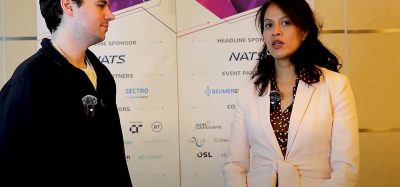Partnership: The key to SESAR’s success
- Like
- Digg
- Del
- Tumblr
- VKontakte
- Buffer
- Love This
- Odnoklassniki
- Meneame
- Blogger
- Amazon
- Yahoo Mail
- Gmail
- AOL
- Newsvine
- HackerNews
- Evernote
- MySpace
- Mail.ru
- Viadeo
- Line
- Comments
- Yummly
- SMS
- Viber
- Telegram
- Subscribe
- Skype
- Facebook Messenger
- Kakao
- LiveJournal
- Yammer
- Edgar
- Fintel
- Mix
- Instapaper
- Copy Link
Posted: 18 February 2013 | Florian Guillermet Deputy Executive Director – Operations and Programme, SESAR | No comments yet
Since the launch of the development phase in 2008, the Single European Sky ATM Research (SESAR) Joint Undertaking (JU) has successfully driven the programme forward by following three step changes.
Step one included the set-up of a Public- Private Partnership with the negotiation and agreement of the technical content and the contractual steps to manage the development phase of the €2.1 billion SESAR programme. Founded by the European Union and EUROCONTROL, SESAR JU brings together 15 industry members representing all actors in air traffic management: the manufacturing industry, such as Airbus, Thales, Indra or SELEX Sistemi Integrati; airports, including Frankfurter Flughafen, Aéroports de Paris, BAA Airports); and air navigation service providers such as Deutsche Flugsicherung, Aena and DSNA.
Since the launch of the development phase in 2008, the Single European Sky ATM Research (SESAR) Joint Undertaking (JU) has successfully driven the programme forward by following three step changes.
Step one included the set-up of a Public- Private Partnership with the negotiation and agreement of the technical content and the contractual steps to manage the development phase of the €2.1 billion SESAR programme. Founded by the European Union and EUROCONTROL, SESAR JU brings together 15 industry members representing all actors in air traffic management: the manufacturing industry, such as Airbus, Thales, Indra or SELEX Sistemi Integrati; airports, including Frankfurter Flughafen, Aéroports de Paris, BAA Airports); and air navigation service providers such as Deutsche Flugsicherung, Aena and DSNA.
The second step was the launch of the programme in June 2009 and the ramp-up of the technical activities. A further 25 associate partners including non-European companies (e.g. Boeing and Thales Australia), SMEs, universities and research institutes were bought on board in 2010-11, to provide additional input and expertise to the programme. In total, around 2,500 experts from Europe and worldwide are currently working together on more than 300 interdependent projects to bring ATM tech – nology up to 21st century standards.
Additionally, the SESAR JU actively involves key stakeholders such as airspace users, staff and professional associations as well as regulatory authorities and the military sector in the programme via ad hoc working arrangements. Through their early involvement in the work programme, the SESAR JU ensures that their needs and expertise are fully reflected in the final SESAR technologies and procedures. This makes the SESAR Joint Undertaking a truly international Public-Private Partnership.
The third step was the move to delivery through SESAR Release Approaches, which started in 2011. We are currently in this phase, about to launch Release 3 of the programme. To prove to the aviation community that SESAR is not a research programme hiding in laboratories, SESAR JU and its members defined the socalled SESAR Release Approach. Since 2011, an annual list of projects ready for early validation has been approved. The ground-breaking aspect of the SESAR approach is that all technological improve ments are directly verified in an opera – tional environment and ready for deployment by Europe’s leading airlines.
The 2011 Release featured 25 operational validation exercises which took place throughout Europe in 2011 and early 2012. The exercises focused essentially on the developments of efficient and green terminal airspace opera – tions, the initial 4D trajectory, enhancing flight safety and collaborative network management. Of these 25 exercises, seven have already been deemed conclusive to support a decision of industrialisation.
Release 2, which is still on-going, has built on the results from Release 1, achieving a wider scope of work and an emphasis on coherence with the overall SESAR programme, ensuring that the ATM Master Plan is properly addressed in line with end-user expectations.
Its 35 exercises concentrated on the follow – ing four main areas of operational improvements:
● Airport platform safety
● Airborne operations
● ATC operations
● Network management.
Although final results from Release 2 are currently still coming through, we are thrilled to share a preview of a few early successes, particularly in the area of airport integration and throughput.
Time Based Separation minima by Approach Controllers
Real-time simulation conducted at NATS CTC successfully validated the use of new controller practices and procedures in combination with controller support tools to enable refined timebased separation minima in an effective way. The exercise involved 12 matched TBS/DBS exercises and 27 scenario exercises, involving nine Heathrow Approach controllers and one Heathrow Tower Runway Controller as well as expert observers from safety and human performance and from the IVT.
A-Controller Working Position
Real-time simulation conducted at DFS Tower Industrial Based Platform Langen successfully validated the optimisation of the Human Machine Interface by providing the controllers with a clear picture of the actual traffic situation and with all the necessary traffic data to assist them in their control tasks.
Surface Planning and Routing
Real-time simulation conducted by DSNA at CDG Industrial Based Platform successfully vali – dated the planning, assignment and potential modification of a route to individual aircraft and vehicles using data link for a safe, expeditious, and efficient movement from their current position to their intended position on the airport movement area.
For 2013, Release 3 will feature 19 validation exercises focusing on the following five areas:
● Traffic synchronisation
● Airport integration and throughput
● Moving from airspace to 4D trajectory management
● Conflict management and automation
● Network collaborative management and dynamic capacity balancing.
Seven of these Release 3 exercises are dedicated to airports in the areas of Localiser Performance Vertical Guidance, using Ground Based Aug – mentations Systems, Airport Safety Nets, Enhanced Situation Awareness, Runway Occupancy Time Management and Airport Operations Management.
We are progressively building our experience, strengthening our approach and leveraging the maturity of the partnership to prioritise the work and prepare for deployment. In that context, bringing tangible evidences of performance benefit will become, more now than before, the absolute priority in 2013 and beyond.
Partnership: The heart of SESAR’s success
The SESAR Joint Undertaking was set up as a Public-Private Partnership for very good reasons: In particular because it was understood that the various ATM stakeholders had to be fully engaged in developing the future ATM system while having one single accountable entity. Day-to-day, this means that our members are part of the solution. We commission the work, steer, monitor and control, but we never do that alone or in isolation, even if we ultimately arbitrate. Our structure relies on the principles of efficiency, effectiveness, economy, subsidiarity and above all, partnership.
In practice, this means that we can’t micromanage or get involved in everything and that we rely on the work performed by our partners and on their commitment. As Deputy Executive Director in charge of Operations, my job is to make sure that we get the right level of steering and involvement where it is needed, and ultimately that we act in the interest of the programme and according to our mission.
The technical challenges ahead of us are enormous but we have the right partnership to face them successfully. And we do. Obvious challenges include the need of synchronisation of the various implementation plans, and the need to properly manage technology transition. But I would like to stress that, with SESAR, we are progressively moving from an ATM system with rather independent components to a collaborative system where the degree of interdependency, integration and the level of automation are much higher.
Proof of this can be seen in our recent validation successes, such as the world’s first Initial 4D flight, extending the Arrival Manager data processing system, and the System Wide Infor mation Management (SWIM) live demon – stration, which can all be seen in the updated 2012 edition of the ATM Master Plan. In all cases, thanks to a tight partnership with key aviation players and the correct level of steering, we have made a major leap forward towards the delivery of SESAR solutions. It is important to note that, not only have we achieved common European solutions, but we have also secured inter – operability and synchronisation with the U.S. based FAA (NextGen programme) and ICAO’s Aviation System Block Upgrades (ASBU).
In effect, I think the biggest challenge is not what we can derive from our own EU pro – gramme, but how we translate this work globally into common definitions with our interregional partners to ensure the uptake of the standards organisations and ICAO.
Our business case is generally accepted but the success of this business case depends on the synchronisation of deployment of SESAR technologies. That is the real challenge, and indeed there is positive momentum to achieving this. We are cooperating with the U.S. under an EU-US Memorandum of Cooperation on ATM Research, with a dedicated annex addressing the key interoperability areas in SESAR and NextGen.
One of the main features of the two programmes is the move from an airspace-based ATM system to a system focusing on the full lifecycle of flight planning and execution in four dimensions. A common definition of the 4D Trajectory is important so that it can easily be translated into ICAO’s Global ATM Operational Concept Document, Doc 9854.
Agreement on standardised exchange and information formats is a key action, again, for uptake at ICAO level for global interoperability.
Additionally, we are working together on data communication services and technologies to align the ATM service with the 4D Trajectories, in close collaboration with the U.S. and European standardisation organisations.
The increasing complexity must be mastered not only from a design point of view – what we currently do in the development – but also in terms of implementation within Europe and at a much larger global level. This is even more critical in today’s period of economic uncertainty when we need to maintain a long-term vision to attain the level of ambition set for SESAR.
Biography
Florian Guillermet has been working in the field of Civil Aviation for over 15 years. He graduated as an engineer from Ecole Polytechnique and the Civil Aviation Engineering School in France, and also holds a Master’s Degree in Aeronautics and Airport Management. Florian started his career in the Flight Planning Department of Air France. He then held different managerial positions at the French Air Navigation Service Provider before joining the European Central Flow Management Unit at EUROCONTROL. Florian has been in charge of various operational and IT projects during this time, with his experience ranging from ATM systems definition and implementation to network operations management. Florian joined the SESAR Joint Undertaking in June 2008 as Chief Programme Officer, and was appointed as Deputy Executive Director – Operations and Programme in January 2012. He is responsible for the execution of the SESAR Programme and the technical operations of the SESAR JU.


















